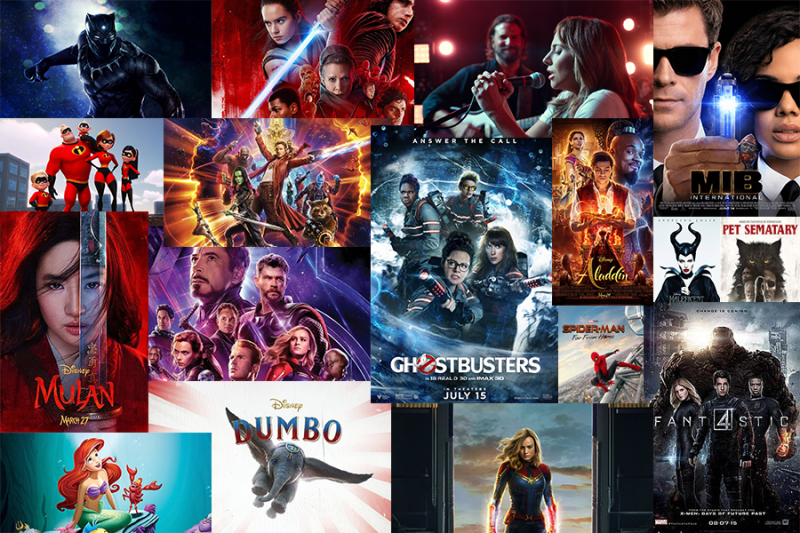The highest grossing movie of 2017 was “Star Wars: The Last Jedi,” with a total domestic gross of around $620 million. “Black Panther” grossed around $700 million, becoming the highest grossing movie of 2018. This year, and most impressively, “Avengers: Endgame” beat James Cameron’s “Avatar” for highest grossing movie of all time (not adjusted for inflation).
All of these movies are remakes or reboots of some way, and the obvious increase in familiar faces and storylines coming from Hollywood lately hasn’t gone unnoticed.
According to Yahoo Movies, less than 24% of major studio movies were original films in 2014, as compared to the 38% in 2004. More recently, the only original movie in the top 10 highest domestic grossing movies of 2019 list is Jordan Peele’s “Us.”
The statistics say Hollywood is getting less original, but it may not be entirely the industry’s fault.
Hollywood has long been considered a giant conglomerate, a business — as such, its job is to find out what people want for the purpose of making money. And it seems like people want nostalgia.
Alan R. Hirsh published a report titled “Nostalgia: A Neuropsychiatric Understanding” and in it, he wrote that nostalgia is not related to a specific memory, but an idealized emotional state. It is the reason why people marry spouses that are reminiscent of their parents and why others long for the holiday season. In fact, according to psychologist Erica Hepper, nostalgia levels tend to be high among young adults in particular.
Certainly, humans have always been nostalgic creatures, so there must be a reason reboots and remakes are appearing more and more frequently. It’s got everything to do with how people are responding to our society today. Though every generation has its own trials and tribulations, America in 2019 is increasingly divided, and the future’s taking a sharp turn, for better or worse, depending on who you ask.
But anyone would probably say that the swooning appeal of nostalgic movies is that they are reminiscent of simpler times. Sequels like “Toy Story 4” and “Incredibles 2” are an example of that; the latter especially, released 14 years after its first iteration, captured the attention of those now in their twenties who grew up with the first movie. The same applies with Disney’s live-action remakes of “Ariel,” “Lion King,” “Mulan,” “Aladdin” and more. Franchises such as “Star Wars” and the Marvel Universe come out with film after film, appealing to viewers that crave familiarity.
I recently sent the “Mulan” trailer to a group chat with my friends (who are all some kind of Asian) and was met with “YASSS” and heart-eyes emojis. We are already making plans to see it in theaters. Did I go to see “Incredibles 2” with my childhood best friends? Yes, I did, because I could remember the first “Incredibles” being on replay as a kid.
In the 2013 study, “Back to the Future: Nostalgia Increases Optimism,” the authors argue that “nostalgia … fosters social connectedness, which subsequently increases self-esteem, which then boosts optimism. The nostalgic experience is inherently optimistic and paints a subjectively rosier future.”
Perhaps the movies on our screens should not only remind us of a flowery past, but also instill hope that the future can be better.
Contact Andrea Sun at andreatsun ‘at’ gmail.com.
